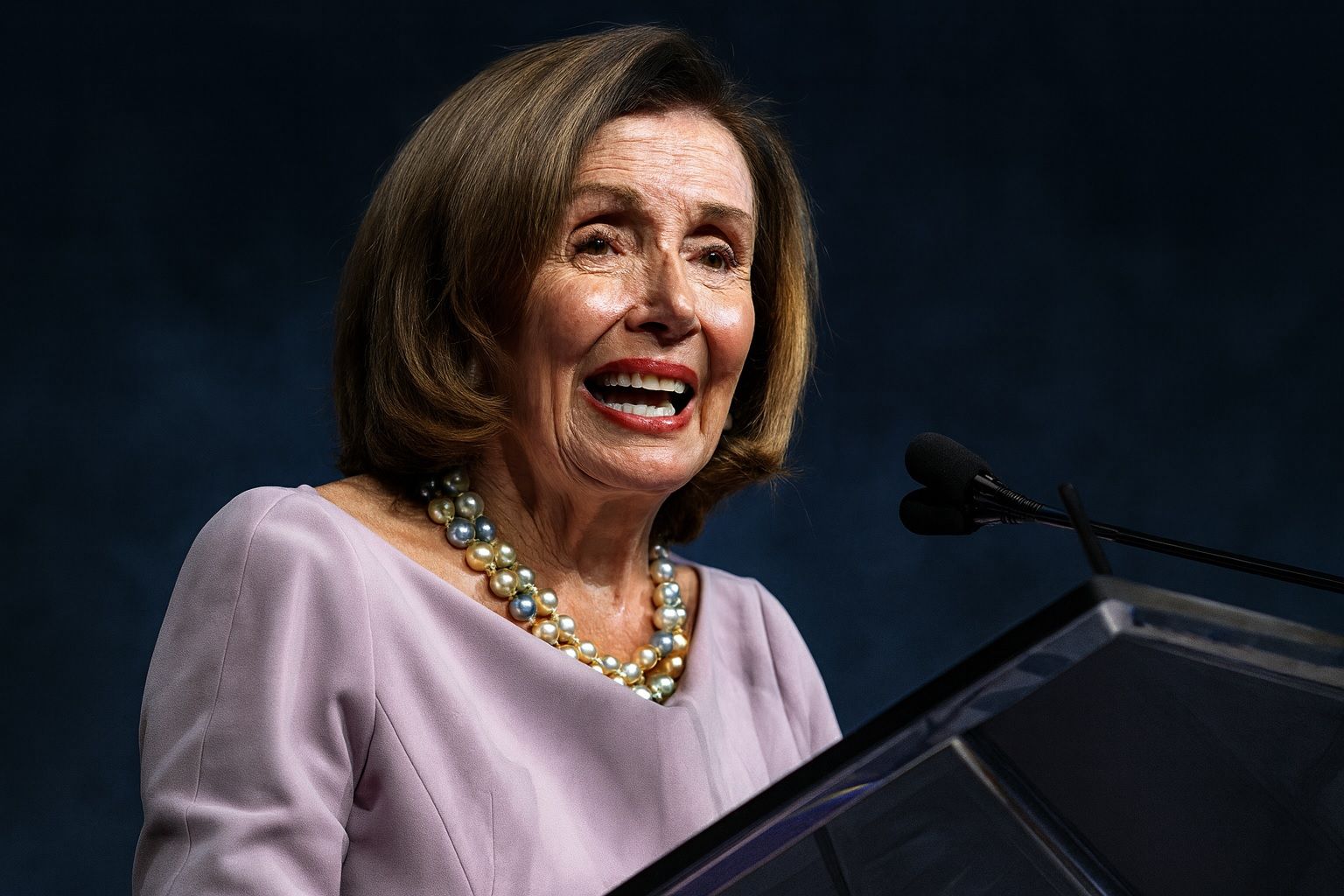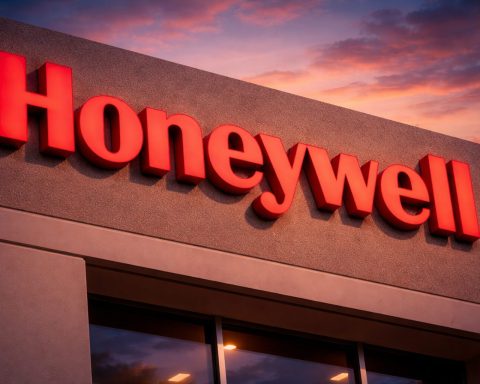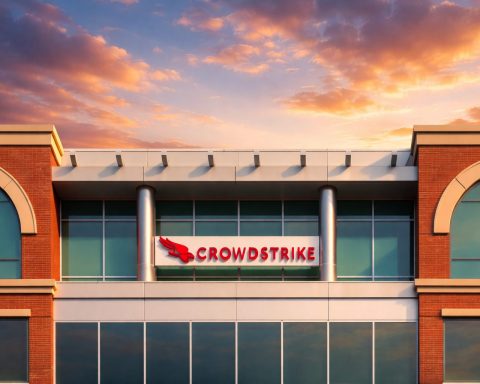- Four stocks in common: Nancy Pelosi (via her husband’s trades) and Warren Buffett’s Berkshire Hathaway both hold four major stocks: Amazon, Apple, Visa, and American Express [1]. This unexpected overlap spans Big Tech and finance – sectors where these famed investors see substantial value.
- Different methods, same picks: Pelosi’s strategy (often buying large call options on tech giants) contrasts with Buffett’s classic buy-and-hold approach [2]. Yet both have placed big bets on the same companies – a sign of strong conviction in these firms’ prospects [3].
- Cathie Wood aligns on tech: Ark Invest’s Cathie Wood and Pelosi share another four stock bets – Alphabet (Google’s parent), Amazon, NVIDIA, and up-and-coming Tempus AI [4] [5]. Both also took stakes in Databricks, a hot AI startup recently valued around $100 billion [6].
- Stocks on the rise: As of mid-October 2025, Apple trades around $250 per share and Amazon near $215-$216, reflecting this year’s tech rally [7] [8]. NVIDIA is about $180 after leading 2025’s AI-chip boom [9]. And Pelosi’s Tempus AI (TEM) bet has skyrocketed – the stock is near $92 (up ~185% since her January purchase) [10].
- Track record & controversy: Pelosi’s stock picks have drawn attention for beating the market – her portfolio gained ~693% since 2014, more than double Buffett’s ~304% in the same period [11] [12]. (The S&P 500 returned ~197%.) However, in the last 12 months her trades underperformed at –7.4% [13], reminding investors that even Pelosi’s portfolio faces short-term swings.
- Expert insight: When high-profile investors converge on the same stocks, it signals confidence in those companies’ fundamentals. “Amazon and Apple, perceived as tech giants, are likely to maintain their relevance due to constant innovations and a solid customer base,” one analysis noted [14]. Meanwhile, Visa and American Express represent strong financial moats and consumer trust in payments [15]. Analysts say these overlapping bets highlight companies positioned for long-term growth.
Pelosi & Buffett’s $Billion Stock Overlap: Tech Titans and Financial Giants
It’s not often that the “Oracle of Omaha” (Buffett) and a prominent Washington figure (Pelosi) end up betting on the same horses. Yet recent disclosures reveal four stocks common to both their portfolios [16]. Amazon and Apple form the tech half of this overlap, while Visa and American Express form the finance half.
- Amazon (NASDAQ: AMZN): Buffett’s Berkshire Hathaway holds 10 million Amazon shares (worth about $2.16 billion) [17]. Pelosi’s stake, managed via husband Paul Pelosi’s trades, took a more aggressive form – 40 call options on Amazon (strike $150, expiring Jan 2026) bought in January [18]. This bold call option play – worth an estimated $250k–$500k – underscores Pelosi’s bullishness on Amazon’s continued growth in e-commerce and cloud. In fact, Amazon remains a favored investment among prominent figures like Pelosi and Buffett, reflecting broad confidence in its long-term trajectory in e-commerce and AWS cloud dominance [19].
- Visa (NYSE: V): Buffett’s firm owns 8.3 million Visa shares (≈$2.9 billion stake), about 1% of Berkshire’s portfolio [20]. The Pelosis have a long history with Visa – Paul Pelosi bought in at the 2008 IPO, and Nancy held Visa for years, periodically adding shares [21]. She did trim the position (selling chunks of 20k shares in 2022, 2k in 2024), but filings indicate they likely still hold significant Visa stock [22]. Both Buffett and Pelosi clearly see Visa as a cornerstone of the global payments economy. With digital transactions steadily rising, Visa’s “strong financial foundations” and trusted brand make it a reliable long-term bet [23]. Even if Pelosi has taken some profits, her continued stake suggests conviction that Visa’s network effects and cashless-payment trends remain powerful tailwinds.
- Apple (NASDAQ: AAPL): This is perhaps the least surprising overlap – Apple is Buffett’s single largest holding (≈280 million shares worth over $69 billion) [24]. It makes up ~23% of Berkshire’s entire stock portfolio, “giving Berkshire around 1.9% ownership of the iPhone maker” [25]. Buffett has called Apple more than a tech stock – it’s a consumer-products powerhouse with an ecosystem that inspires fierce customer loyalty. Berkshire has trimmed its Apple stake slightly in recent quarters [26], but the position remains huge. Pelosi, for her part, has actively traded Apple – buying call options in recent years and even donating some shares to charity [27]. Notably, she sold 31,600 Apple shares at the very end of 2024 [28], possibly cashing in on gains. Still, given Apple’s stature as a $2.5+ trillion company with robust revenue streams (iPhones, services, etc.), it’s a stock both investors clearly “share optimistic views about Apple’s resilience and growth potential” [29] [30]. It doesn’t hurt that Apple has been a market juggernaut – as of this week its stock trades around $250, near all-time highs [31].
- American Express (NYSE: AXP): Buffett’s affection for American Express goes back decades – Berkshire first started buying AXP in the 1960s and later made it a core holding in the 1990s [32]. Today Berkshire owns 151.6 million AXP shares (~21.8% of the company) worth over $50 billion [33]. That’s ~17% of Berkshire’s portfolio – a testament to Buffett’s “unwavering confidence” in AmEx [34]. Pelosi’s portfolio has also included American Express, aligning with her focus on firms “poised for long-term success” [35]. What makes AXP so attractive? The brand’s premium customer base and moat in credit cards are key. AmEx caters to affluent spenders and businesses, enjoying higher fees and famously loyal cardholders. It has also proven resilient through recessions (historically low default rates on its clientele) [36]. Recent analysis highlights a looming tailwind: an estimated $124 trillion in wealth transfer to younger generations by 2048, which could “turbocharge growth” in spending for networks like American Express [37]. Despite a roughly 8% dip in AXP’s share price in 2025, experts frame it as a “buy-and-hold forever” kind of stock for patient investors [38]. Both Buffett and Pelosi appear to agree on its long-term value – seeing AmEx as a financial juggernaut that will keep thriving as global consumer spending climbs [39] [40].
In summary: these four shared stocks suggest that despite very different investing styles, Pelosi and Buffett are finding common ground in companies with dominant market positions and long-term growth stories. Their overlap spans two industries – Tech (Amazon, Apple) and Finance (Visa, AmEx) – that currently anchor the U.S. economy. It’s telling that Apple and American Express are actually Buffett’s two largest holdings at Berkshire [41]. Even a consummate value investor like Buffett and a more growth-oriented trader like Pelosi can agree that these blue chips are worth betting on.
“With both Pelosi and Buffett endorsing these stocks, their insights may suggest promising opportunities for investors,” observes investing writer Thomas Cooper [42]. Amazon and Apple benefit from constant innovation and a massive customer ecosystem, while Visa and AmEx “symbolize strong financial foundations and prospering consumer trust,” he notes [43] [44]. In other words, these are companies that marry growth with durability, which appeals to both the fast-trading political insider and the buy-forever value titan.
Different Styles, Shared Convictions
It’s striking to see Pelosi and Buffett arrive at the same picks, given how different their investing philosophies are:
- Warren Buffett famously preaches value investing – seeking companies with strong fundamentals, stable earnings, and reasonable valuations, then holding “forever.” His bets on Apple and American Express fit this mold (high-profit businesses with durable competitive advantages). Even Amazon, though a high-growth tech name, had matured and proven profitable by the time Buffett bought in. Buffett typically avoids complex instruments like options and rarely trades in and out; he’s known for saying his favorite holding period is “forever.”
- Nancy Pelosi, through trades reported by her husband, Paul, tends to lean into high-growth tech and often uses options to leverage those bets [45] [46]. The Pelosis have repeatedly bought deep-in-the-money call options on names like Apple, Amazon, Google, and NVIDIA – essentially a bullish wager with a one-year time horizon, often exercised into shares later [47] [48]. This approach is more aggressive and short-term oriented than Buffett’s. Pelosi’s portfolio also shows bold sector timing – for instance, loading up on semiconductor and defense stocks ahead of big moves (a pattern that’s drawn both admiration and scrutiny) [49] [50]. As one veteran investor quipped, “she’s making bold, often leveraged plays, and they’re paying off” – citing Pelosi’s timely call option buys on NVIDIA and Apple in early 2025 before those stocks surged on the AI boom and a tech rebound [51].
Despite these differences, the overlap in their holdings shows a Venn diagram of quality. Buffett’s value lens and Pelosi’s growth-focused trading both zeroed in on companies that combine scale, profitability, and future growth potential. It suggests that whether one looks at stocks from a value perspective or a momentum/trading perspective, the truly exceptional companies stand out. As Chris Katje of Benzinga points out, Buffett typically favors “out-of-favor” value plays and long-term compounding, whereas “Paul Pelosi favors the technology sector and high-growth names” with shorter-term option plays – yet “Pelosi and Buffett’s overlap covers two main sectors: technology (Amazon, Apple) and finance (Visa, American Express)”, indicating “two of the most closely watched names in finance share some investment beliefs.” [52] [53]
Notably, both investors’ choices underscore confidence in the U.S. economy’s direction. Tech giants like Apple and Amazon are essentially bets on continued innovation, consumer spending, and digital expansion. Visa and AmEx are bets on sustained consumer credit activity and payment transactions. These picks suggest that Pelosi and Buffett (each in their own way) are bullish on American consumers and businesses – from everyday online shopping to premium credit card spending.
Another commonality: long-term trend recognition. Buffett and Pelosi may differ in tactics, but both have been adept at identifying winners early and sticking with them. Buffett’s Apple stake, for example, began in 2016 when some thought the iPhone’s best days were over – he proved them wrong as Apple’s value tripled. Pelosi’s trades, while more short-term, have ridden secular waves like tech and defense; one financial columnist noted Pelosi’s 2025 moves “weren’t reacting to headlines…they reflected a thesis” and positioning ahead of trends (AI, geopolitical defense spending, etc.) [54] [55]. In their own styles, both investors exhibit conviction – Buffett by holding through volatility, and Pelosi by making big, concentrated bets and often holding those positions for a year or more (longer than many assume) [56] [57].
Cathie Wood and Pelosi: A Meeting of Minds in Tech
Nancy Pelosi’s stock strategy doesn’t just overlap with Buffett – it also intriguingly aligns with Cathie Wood, the star stock-picker behind ARK Invest. Pelosi and Wood, two very different figures, have four stocks in common as well [58]:
- Alphabet (Google) – Pelosi disclosed buying 50 call options on Alphabet (GOOG) the same day as her Amazon calls (Jan 14, 2025, strike $150 for Jan 2026) [59]. Wood’s ARK funds also hold Alphabet across multiple ETFs (ARKK, ARKW, ARKQ), though it’s not a top-10 position in any [60]. Both clearly see Google’s long-term strength in search, cloud, and AI. (Alphabet’s stock is up this year, trading around $250 as of mid-October [61].)
- Amazon (again) – Unsurprisingly, Amazon shows up here too. Wood’s various ARK ETFs cumulatively have Amazon as roughly a ~1.9% allocation (spread across five different ARK funds) [62] [63]. It’s one of only two stocks that Cathie Wood and Buffett both own as well (the other being BYD, a Chinese EV maker) [64] [65]. Amazon’s inclusion by all three – Pelosi, Wood, and Buffett – underscores its unique appeal: a tech growth story with real profits and entrenched market position. Wood, known for chasing disruptive innovators, apparently agrees Amazon still has growth legs ahead in e-commerce, cloud, and maybe AI. Amazon’s stock is up ~50% year-to-date, reflecting those prospects.
- NVIDIA (NVDA) – The chipmaker powering the AI revolution is a natural favorite of Wood’s (who has long held NVDA in ARK funds) and became one of Pelosi’s largest 2024-2025 wins. Pelosi’s January disclosure showed 50 call options on NVDA (strike $80, Jan 2026) [66]. She had even exercised 500 earlier NVIDIA call options into 50,000 shares in Dec 2024 [67] – a hugely profitable move given NVIDIA’s share price has soared on surging AI chip demand. ARK owns NVIDIA across all its main ETFs (ARKK, ARKW, ARKQ, ARKF, ARKX), again not top 10 but a significant thematic holding [68]. Three of the four Pelosi/Wood overlapping stocks – Amazon, Alphabet, NVIDIA – are members of 2023’s famed “Magnificent 7” tech leaders [69]. Their convergence here signals a shared belief that AI and big tech platforms will drive future growth. As Wood’s team put it, the overlap shows both are betting on “growth for some of the largest technology companies going forward,” particularly in AI-related areas [70].
- Tempus AI (NASDAQ: TEM) – This is the outlier in terms of size: Tempus is a lesser-known, small-cap AI-driven precision medicine company. Pelosi’s Jan 2025 trades included 50 call options on Tempus (strike $20, Jan 2026) [71]. Around the same time, Cathie Wood’s ARK Genomic (ARKG) and Innovation (ARKK) funds were buying Tempus stock aggressively – it became the #1 holding in ARKG (11.3% of that ETF) and a top-5 holding in ARKK (5.3%) [72]. Clearly, Wood is extremely bullish on Tempus’s prospects in using AI for healthcare data. Pelosi’s bet on Tempus flew under the radar initially, but in hindsight looks brilliant: Tempus stock has surged over 180% since January [73], recently breaking above $100 a share [74]. That means Pelosi’s calls (bought when TEM was around $32 [75]) have likely ballooned in value – a point not lost on traders tracking Congress. Benzinga dubbed Pelosi’s Tempus play “possibly the smartest trade in Washington” after the stock tripled [76]. Both Wood and Pelosi saw something in this “little” AI stock that the market eventually caught onto – a testament to their risk tolerance and foresight in the AI space.
Beyond public stocks, it’s notable that Pelosi and Cathie Wood even share a stake in a private tech unicorn: Databricks. Pelosi (again via Paul’s venture investments) got into Databricks, and Wood’s ARK participated in funding rounds as well [77]. Databricks, a data analytics/AI platform, hit a $100 billion valuation in a recent funding round – delivering massive paper gains to early backers [78]. This kind of private investment is unusual for a sitting politician’s family, but it highlights Pelosi’s broad reach in tech investing.
What’s the takeaway from the Pelosi-Wood overlap? In short, both are heavily betting on the future of AI and disruptive tech. Wood’s entire ethos is backing innovative, sometimes unprofitable tech firms with huge upside; Pelosi’s recent trades show an uncanny alignment with those themes (big tech, AI chips, and even speculative plays like Tempus). Their shared holdings signal that AI, cloud computing, and next-gen internet/fintech are areas where even risk-tolerant investors with very different mandates see significant upside. As ARK’s team noted, “the main overlap between the two is AI names and bets on growth for some of the largest technology companies going forward” [79].
2025 Market Context: Tech Resurgence and Performance
It’s worth noting why these overlaps are coming to light now. 2025 has been a blockbuster year for tech stocks, especially compared to 2024. Many “Magnificent 7” tech names (Apple, Amazon, Alphabet, NVIDIA, Microsoft, Meta, Tesla) struggled or traded sideways in late 2024 amid rising interest rates. But in 2025, cooling inflation and AI enthusiasm sparked a tech resurgence, and investors like Wood and Pelosi who doubled down on tech in late 2024 or early 2025 have been richly rewarded [80].
Cathie Wood’s ARK funds, for example, are dramatically outperforming this year. As of August, all five of her flagship ETFs were up 30–46% year-to-date, trouncing both the S&P 500 (up ~9.9%) and even Berkshire Hathaway (up only ~6%) [81] [82]. This reversal of fortune (growth beating value) explains why Pelosi’s aggressive tech bets have shone in 2025, while Buffett’s value-heavy portfolio is lagging the broad market. “2025 looks like Buffett will trail the broader market returns,” one report noted, after Berkshire beat the S&P in 3 of the last 4 years [83]. It’s a reminder that market cycles favor different styles at different times: 2022–2023 rewarded energy and value; 2025 has swung back to growth and innovation.
Stock prices of the overlapping picks tell the story: Apple is near record highs around $250 [84]. Amazon, though well below its 2021 peak, has climbed back above $215 [85] on improving profitability in e-commerce and strong cloud demand. Alphabet (GOOGL) has rallied to about $250 as well, with investors upbeat on Google’s AI efforts and ad business [86]. NVIDIA, the poster child of the AI boom, after a 2023 surge, is holding around $180–$190 [87] (up ~3x from early 2023). Even American Express and Visa – which are more interest-rate sensitive – have been relatively stable near all-time highs (Visa ~$348, AXP ~$335) [88], supported by healthy consumer spending levels. In short, the stocks that Pelosi, Buffett, and Wood gravitated toward are largely performing well in 2025, reflecting the fundamentals that attracted these investors in the first place.
Outlook: Are These Stocks Still Buys?
The big question for everyday investors is whether these overlapping favorites still have room to run. Analysts generally remain positive on their long-term outlooks:
- Apple: Continues to benefit from a loyal iPhone user base (the iPhone 15 launch saw solid demand) and growth in services and wearables. Even Buffett, who once avoided tech, has said Apple is more of a consumer products company – praising its sticky ecosystem. With new product categories (Vision Pro headset) and massive free cash flow, Apple is seen as a stable growth-and-income play. Experts believe Apple can “maintain relevance through constant innovation” [89] – the very reason Pelosi and Buffett remain invested.
- Amazon: After a post-pandemic lull, Amazon is reaccelerating. Cost cuts in retail, booming AWS cloud revenues, and new AI initiatives (like generative AI services and Alexa upgrades) have analysts forecasting double-digit growth ahead. Yahoo Finance notes that Amazon “continues to be a favored investment among prominent figures” like Pelosi and Buffett, highlighting its perceived “growth potential” [90]. As e-commerce penetration rises and AWS dominates cloud computing, bulls argue Amazon’s valuation (still ~30% below its all-time high) leaves substantial upside.
- Alphabet (Google): Despite regulatory overhangs (antitrust trials) and competition in AI search, Alphabet’s core ad business is robust and its Google Cloud is nearing profitability. Both Pelosi and Wood clearly bet on Alphabet’s AI capabilities – from its leading position in AI research (DeepMind) to potential in self-driving (Waymo). Many analysts see Google as undervalued relative to its tech peers, with a huge net cash position and steady double-digit growth. If AI search or cloud gains traction, Alphabet could justify the confidence shown by these big-name investors.
- NVIDIA: This is a high-volatility name that has become a must-own for many growth investors thanks to its near-monopoly in high-end AI chips. Wood and Pelosi’s enthusiasm for NVDA was rewarded as the company’s earnings exploded in 2023–25 on AI demand. The stock isn’t cheap after a 3x run, but if one believes AI is in early innings, NVIDIA’s data-center chip business could continue to boom. Wall Street forecasts suggest strong revenue growth into 2026. That said, any slowdown in AI investment or new competition could introduce risk – something to watch for in 2026+. Nonetheless, Pelosi and Wood’s bet here shows they “positioned ahead of the AI trend,” a move that paid off [91].
- Tempus AI: This small-cap is riskier and more speculative than the rest. Its huge rally (nearly +200% YTD) may not be sustainable unless the company delivers on high expectations in healthcare AI. However, ARK Invest’s heavy allocation to Tempus (over 11% of ARKG) signals conviction that Tempus’s AI-driven diagnostics and data can revolutionize precision medicine. For Pelosi, even after the surge, her calls don’t expire until 2026 – implying she too expects more upside ahead as Tempus grows. Investors intrigued by this Pelosi/Wood pick should be cautious (smaller companies can be volatile) but keep an eye on Tempus’s progress with FDA clearances and partnerships. (Indeed, in September Tempus gained an FDA clearance for its genomic testing platform, boosting the stock) [92].
- Visa & American Express: Both are essentially plays on consumer spending and the payments economy. Despite near-term headwinds from higher interest rates (which can raise borrowing costs or temper spending), the secular trend from cash to card and digital payments is intact. Visa is more of a tollbooth on global commerce (taking a cut of transactions), while AmEx is more of a lender (with credit risk but also high fees). Buffett’s loyalty to AXP and Pelosi’s long-term holding of Visa indicate they expect these companies to keep compounding earnings. In fact, U.S. consumer balance sheets remain healthy in 2025, and travel and entertainment spending (key for AmEx) is still rebounding post-pandemic. Some analysts have highlighted the massive “Millennial wealth transfer” coming in future decades as a catalyst for credit card businesses [93] – younger consumers inheriting wealth could fuel spending and card usage. Short-term, rising loan losses or fintech competition are risks, but long-term, both Visa and AmEx are deeply entrenched. They enjoy brand power and, in Visa’s case, near-duopoly market share (with MasterCard) in processing. It’s no wonder Pelosi and Buffett “believe in the long-term prospects of the financial sector” via these names [94].
In aggregate, the “basket” of stocks that Pelosi, Buffett, and Wood intersect on presents a kind of all-weather portfolio: world-dominating tech platforms, the leading AI chip supplier, and dominant payment/credit franchises. That mix has so far proven resilient and lucrative. Future performance will of course depend on execution by these companies and broader economic conditions, but it’s telling that none of these stocks are fly-by-night fads – they are largely established leaders with competitive moats.
Lessons for Investors: Follow the Smart Money, But Do Your Homework
Seeing famous investors pile into the same stocks can be tantalizing: if Pelosi, Buffett, and Wood all independently arrived at these picks, should we mere mortals just follow suit? Financial experts urge caution. While it’s useful to watch what top investors are buying, blindly copying their trades is not a guaranteed strategy.
As one market veteran put it, “Chasing politicians’ trades is not a strategy. It’s entertainment. But understanding what’s behind those trades? Now that’s education.” [95] The fact that Pelosi and others are investing in, say, AI chips or fintech doesn’t mean you should pour your life savings into those areas without understanding why. Instead, consider the rationale: these overlaps suggest big-money insiders are bullish on certain themes – mega-cap tech, AI, digital payments – for good reason.
“If she’s consistently placing large bets in sectors with upside, maybe those sectors deserve your attention too. Do your research. Don’t copy, but consider,” advises finance columnist Michael Schwarz in reference to Pelosi’s trading success [96] [97]. In other words, use these high-profile bets as ideas to investigate, not as gospel.
It’s also worth noting that even the best investors have missteps. For instance, Pelosi’s portfolio isn’t bulletproof – her bets on green energy stocks underperformed in 2023-24 [98], and Buffett famously missed the boat on tech for many years (only embracing Apple late). Diversification and risk management still apply. Just because Tempus AI tripled doesn’t mean it can’t fall just as fast; just because Apple is a juggernaut today doesn’t mean it faces no challenges (competition, regulatory risks, etc.).
That said, when you find stocks that both growth seekers and value sages agree on, it’s a strong signal of quality. The reason so many eyes watch Nancy Pelosi’s disclosures (and there’s even a popular “Pelosi stock tracker”) is the perception that she has a knack (or inside insight) for picking winners. In fact, data from Quiver Quant shows Pelosi’s trades absolutely crushed the market over the past decade [99]. Meanwhile, Buffett’s stock picks are legendary for a reason – he tends to bet on companies that go on to thrive for decades (Coca-Cola, American Express, Apple, etc.). Cathie Wood, while more volatile in performance, is often early to spotting transformational tech trends (like Tesla or Bitcoin in years past).
So, when all three converge, investors would be wise to take note and ask: what do they see that I might be missing? The overlaps discussed – e.g. Amazon, which touches e-commerce, cloud, and AI; or NVIDIA, at the heart of the AI revolution; or even Apple, blending consumer tech with services – each have strong secular growth stories. These are not obscure penny stocks or fleeting memes; they are core assets for the future economy.
In conclusion, the fact that Nancy Pelosi and Warren Buffett (and in some cases Cathie Wood) are “betting on the same stocks” [100] is more than just an intriguing news tidbit. It highlights a convergence of confidence in specific companies that are leading their fields. Investors at home can learn from this: focus on companies with enduring competitive advantages and long-term growth drivers, the way Buffett does, and don’t be afraid to position ahead of major trends (like AI), the way Pelosi and Wood do – but only if you’ve done your due diligence. As always, use these insights as one input in your investment process. After all, even Pelosi and Buffett differ on many holdings; but where they do agree, it’s worth paying close attention.
Sources: Disclosure reports and analysis via Benzinga [101] [102]; Yahoo Finance [103] [104]; Investors Hangout commentary [105] [106]; InsiderFinance analysis [107] [108]; and TS² News reports [109].
References
1. www.benzinga.com, 2. www.benzinga.com, 3. www.benzinga.com, 4. www.benzinga.com, 5. www.benzinga.com, 6. www.benzinga.com, 7. www.benzinga.com, 8. www.benzinga.com, 9. www.benzinga.com, 10. markets.financialcontent.com, 11. www.sahmcapital.com, 12. www.sahmcapital.com, 13. www.sahmcapital.com, 14. investorshangout.com, 15. investorshangout.com, 16. www.benzinga.com, 17. www.benzinga.com, 18. www.benzinga.com, 19. www.benzinga.com, 20. www.benzinga.com, 21. www.benzinga.com, 22. www.benzinga.com, 23. investorshangout.com, 24. www.benzinga.com, 25. www.benzinga.com, 26. www.benzinga.com, 27. www.benzinga.com, 28. www.benzinga.com, 29. investorshangout.com, 30. investorshangout.com, 31. www.benzinga.com, 32. www.benzinga.com, 33. www.benzinga.com, 34. investorshangout.com, 35. investorshangout.com, 36. ts2.tech, 37. ts2.tech, 38. ts2.tech, 39. www.benzinga.com, 40. www.benzinga.com, 41. www.benzinga.com, 42. investorshangout.com, 43. investorshangout.com, 44. investorshangout.com, 45. www.benzinga.com, 46. www.benzinga.com, 47. www.benzinga.com, 48. www.benzinga.com, 49. wire.insiderfinance.io, 50. wire.insiderfinance.io, 51. wire.insiderfinance.io, 52. www.benzinga.com, 53. www.benzinga.com, 54. wire.insiderfinance.io, 55. wire.insiderfinance.io, 56. wire.insiderfinance.io, 57. wire.insiderfinance.io, 58. www.benzinga.com, 59. www.benzinga.com, 60. www.benzinga.com, 61. www.benzinga.com, 62. www.benzinga.com, 63. www.benzinga.com, 64. www.benzinga.com, 65. www.benzinga.com, 66. www.benzinga.com, 67. www.benzinga.com, 68. www.benzinga.com, 69. www.benzinga.com, 70. www.benzinga.com, 71. www.benzinga.com, 72. www.benzinga.com, 73. markets.financialcontent.com, 74. markets.financialcontent.com, 75. x.com, 76. markets.financialcontent.com, 77. www.benzinga.com, 78. www.benzinga.com, 79. www.benzinga.com, 80. wire.insiderfinance.io, 81. www.benzinga.com, 82. www.benzinga.com, 83. www.benzinga.com, 84. www.benzinga.com, 85. www.benzinga.com, 86. www.benzinga.com, 87. www.benzinga.com, 88. www.benzinga.com, 89. investorshangout.com, 90. finance.yahoo.com, 91. wire.insiderfinance.io, 92. www.insidermonkey.com, 93. ts2.tech, 94. investorshangout.com, 95. wire.insiderfinance.io, 96. wire.insiderfinance.io, 97. wire.insiderfinance.io, 98. wire.insiderfinance.io, 99. www.sahmcapital.com, 100. www.benzinga.com, 101. www.benzinga.com, 102. www.benzinga.com, 103. www.sahmcapital.com, 104. www.sahmcapital.com, 105. investorshangout.com, 106. investorshangout.com, 107. wire.insiderfinance.io, 108. wire.insiderfinance.io, 109. ts2.tech







